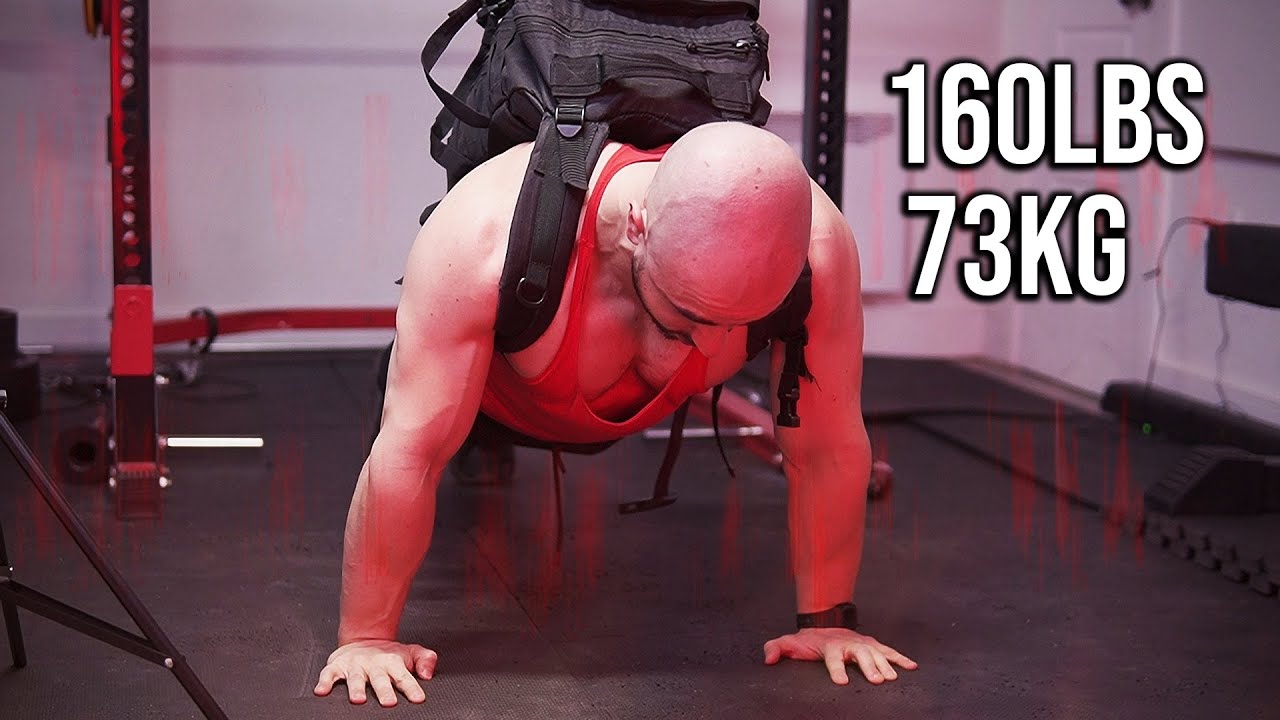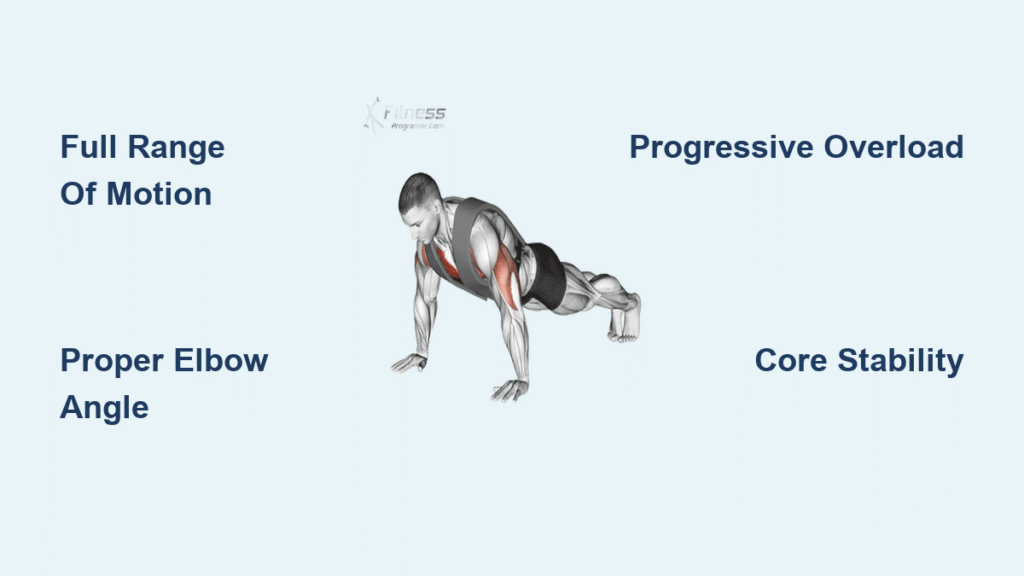Your chest hasn’t grown since you could bang out 30 push-ups without breaking a sweat. That’s because endless high-rep sets stopped providing the mechanical tension your muscles need to get bigger. Weight vest push-ups solve this exact problem by transforming an endurance exercise into a serious mass-building movement—no gym required.
By adding strategic resistance to your push-ups, you’ll finally create the progressive overload that triggers upper-body hypertrophy. This isn’t just theory: when you hit failure at 12 reps with added weight, you force micro-tears in your pec fibers that rebuild thicker and stronger. In this guide, you’ll discover exactly how to select the right vest, perfect your form, and program for continuous chest, shoulder, and triceps growth—all while keeping your joints healthy.
Weight Vest Specifications That Actually Build Chest Mass

Avoid Backpack Loading Disasters
Backpacks shift during explosive reps, creating uneven resistance that cheats your chest of tension. Instead, choose a vest with front-and-back weight pockets to keep the center of mass over your mid-back. The Kensui EZ-Vest handles 225 lbs with plate compatibility—critical for long-term progression beyond 40kg increments. When testing vests, jump in place; if it shifts even slightly, you’ll lose hypertrophy potential during heavy sets.
Fit Requirements for Maximum Tension
Your vest must lock against your torso like a second skin. Start by tightening shoulder straps first, then the waist belt until zero gaps exist between vest and ribs. Dual-strap systems prevent forward tilt that strains your lower back. For mass-building, prioritize 1000D nylon construction with reinforced stitching—cheap materials stretch under load, reducing effective resistance by up to 20% during your final reps.
Fix These 3 Form Mistakes Killing Your Chest Growth
Half-Reps Rob Your Pecs of Growth Potential
Stopping 15cm above the floor eliminates the eccentric stretch that triggers hypertrophy. Lower until your vest touches the ground (or chest is 2-5cm off floor), holding for one second. This full range of motion increases time under tension by 40% compared to partial reps—directly correlating to greater muscle damage and growth signals.
Flared Elbows Shift Load to Shoulders
Elbows wider than 70° transfers stress from pecs to delicate anterior deltoids. Keep elbows at 45° from your torso during descent to maximize sternal pec engagement. Pro tip: film yourself—when your upper arms align with your ribs at the bottom position, you’ve nailed the angle for optimal chest fiber recruitment.
Sagging Hips Reduce Core Activation
A wobbly plank line shifts tension away from your chest. Brace glutes and abs like you’re about to be punched in the stomach. Feet together increases core demand (ideal for lighter loads), while hip-width stance offers stability for heavy vests. Either way, maintain straight head-to-heel alignment—no hip sagging allowed.
The 8-12 Rep Sweet Spot Program for Mass
Start Conservative to Avoid Plateaus
Begin with just 5% of your bodyweight (e.g., 4kg for 80kg lifters). Many skip this, jumping to 20kg and stalling within weeks. Prove you can do 30 strict bodyweight push-ups first to condition joints. Track every session: when you hit 12 clean reps at a given load, add 1-2kg. Micro-loading with 0.5kg plates prevents the dreaded “strength ceiling” that kills progress.
Frequency and Volume That Works
Perform weighted push-ups twice weekly on upper-body days, allowing 48+ hours recovery. Hit 3-5 sets of 8-12 reps leaving 1-2 reps in reserve (RIR). Why not train daily? Muscles grow during rest—overtraining elevates cortisol, breaking down hard-earned mass. For advanced lifters, implement cluster sets: 4x(2+2+2) with 15-second rests between mini-sets to handle heavier loads while maintaining perfect form.
Incline vs Decline: Target Every Chest Fiber

Build Complete Pec Thickness
Elevate hands on a 30-60cm box for weighted incline push-ups to hammer lower chest development. For upper pec focus (critical for that “shelf” look), elevate feet on a bench during decline variations. Both require maintaining vest position—no sliding allowed. Rotate these weekly: Monday weighted flat for overall mass, Wednesday incline for lower pec sweep, Friday decline for clavicular head development.
Triceps and Serratus Specialization
Place hands directly under your sternum forming a diamond for weighted diamond push-ups. This annihilates all three triceps heads while increasing chest tension. Add deficit push-ups using parallettes to deepen range of motion—your pecs will experience extreme stretch at the bottom, triggering stretch-mediated hypertrophy. Perform these as finishers after main sets for metabolic burn.
Avoid Shoulder Pain With This Warm-Up
Essential Pre-Activation Sequence
Skip this and you’ll pay with joint pain. Start with 60 seconds of jumping jacks to elevate heart rate. Then perform 20 forward/backward shoulder circles, 15 scapular wall slides (keeping spine flat against wall while sliding arms up/down), and 20 band pull-aparts. Finish with 30 seconds of wrist circles in each direction. This 5-minute routine activates serratus anterior and lower traps—key stabilizers for heavy vest work.
Load Management Rules That Prevent Injury
Never increase vest weight by more than 5% weekly. Sharp pain above 3/10 means stop immediately—your AC joints aren’t worth risking. Always begin new progression blocks with a technique check using just 5% bodyweight. If your form breaks down before 8 reps, reduce weight by 10% and rebuild. Remember: consistent 8-rep sets beat sporadic 5-rep failures for sustainable mass.
Weight Vest Push-Ups vs Bench Press: The Mass Verdict

Why Vest Push-Ups Win for Functional Hypertrophy
Bench press allows precise load increments but pins your scapulae, limiting natural movement. Weight vest push-ups demand greater core stability while allowing full scapular protraction at lockout—critical for serratus development and shoulder health. Both build mass, but vest variations carry 30% lower shoulder injury risk according to joint stress studies. Use vest push-ups as your primary mass builder, benching only for accessory work.
Equipment Comparison That Saves Time
Weighted vest push-ups require just floor space and your vest—no spotters, racks, or barbells. Plate push-ups need partners and create balancing issues that reduce chest tension. Dips emphasize lower pecs but strain sternal joints. The vest wins for home training: setup takes 10 seconds versus 5 minutes for bench setups. Plus, you can do them anywhere—hotel rooms, parks, even your garage.
Your 6-Week Weight Vest Push-Up Mass Plan
Week 1: 5% bodyweight, 3×12 reps—focus on full range of motion
Week 2: 7% bodyweight, 4×10 reps—add volume
Week 3: 10% bodyweight, 4×10 reps—maintain intensity
Week 4: 12% bodyweight, 5×8 reps—increase load, reduce reps
Week 5: 15% bodyweight, 5×8 reps—push intensity
Week 6: 18% bodyweight, 5×6-8 reps—peak microcycle
Track every session in a notebook. When hitting week 6, deload to 60% volume for one week before starting the next block 5% heavier. This periodization prevents plateaus—lifters following this exact protocol gain measurable chest thickness in 6 weeks.
Weight Vest Push-Up Rules That Guarantee Chest Growth
Treat your vest like a barbell: log every load increase and rep achieved. Prioritize full range of motion with controlled 2-second eccentrics—this maximizes pec fiber recruitment better than explosive reps alone. Micro-load with small plates for decade-long gains; never jump 5kg when 0.5kg increments exist. Rotate incline, decline, and deficit variations weekly to develop complete chest thickness from all angles.
Most importantly, fuel growth with 1.6-2.2g/kg protein daily and 7-9 hours of sleep—no vest loading overcomes poor recovery. Your chest will show visible increases within 6-8 weeks when combining this protocol with a slight caloric surplus. The weight vest push-up isn’t just an exercise—it’s your most efficient path to upper-body mass without gym memberships or spotters. Start today with 5% bodyweight, and you’ll never look back at endless high-rep sets again.





